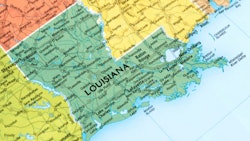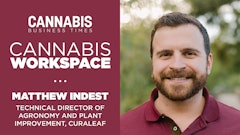
Louisiana will regulate delta-8 THC in food products as the state health department has started reviewing manufacturers’ and distributors’ plans, registering products, and issuing permits, according to a Law360 report.
RELATED: Texas Officials Declare Delta-8 THC Illegal
Manufacturers and distributors seeking permits must submit floor plans of their facilities, plans for processing and recalls, and proofs of the labels that they plan to use on their products, according to Law360. They will also have to undergo an initial “preoperational” inspection in order to receive the permits.
Permit fees are based on the businesses’ annual sales and can cost up to $1,375, Law360 reported.
It will take the Louisiana Department of Health 10 days to issue a permit to allow a facility to manufacture and distribute consumable hemp, according to Law360.
The manufacture and distribution of products containing over 0.3% delta-9 THC or over 1% of total THC, as well as inhalable and dietary supplement products, are prohibited under the Department of Health’s guidance.
























